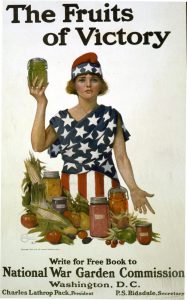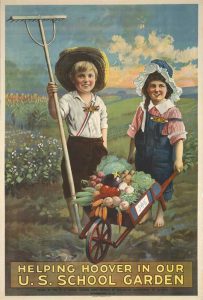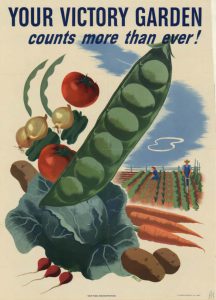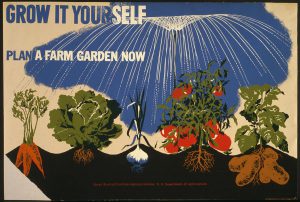How many of you remember the news media images from March and April of this year depicting empty shelves in grocery stores? Because of the COVID-19 situation, many folks are planting vegetable gardens for the first time, and these gardens have been dubbed “Corona Victory Gardens.” But the use of the term, “victory garden,” has deeper “roots” in history. The poster below, produced in 1918 by the National War Garden Commission (NWGC), encouraged the public to grow and preserve food as part of the war effort. Schools and their students were “enlisted” in the movement too. The federal government continued to encourage citizens to grow and preserve their own food after the war since the U.S. was still providing substantial food aid to war-torn Europe and its citizens. The NWGC indicated in their publication, War Gardening and Home Storage of Vegetables, that U.S. citizens grew $520 million in food crops in gardens, vacant lots and backyards in 1918. In today’s dollars, this equates to approximately 8.8 billion dollars!


The strategy continued during World War II, as the administration was concerned with citizens having enough to eat due to the rationing of foodstuffs. One way to educate and inform the public was through the use of posters and booklets (as seen below). Approximately four million jars, cans, and containers of tomatoes and other vegetables were preserved by U.S. citizens during World War II, according to the U.S. Department of Agriculture (USDA). See more historic images and learn more facts about these victory gardens and home preservation methods of the time by visiting Canning Through the War Years, compliments of the USDA National Agricultural Library, and Gardening for the Common Good, compliments of Smithsonian Libraries.

